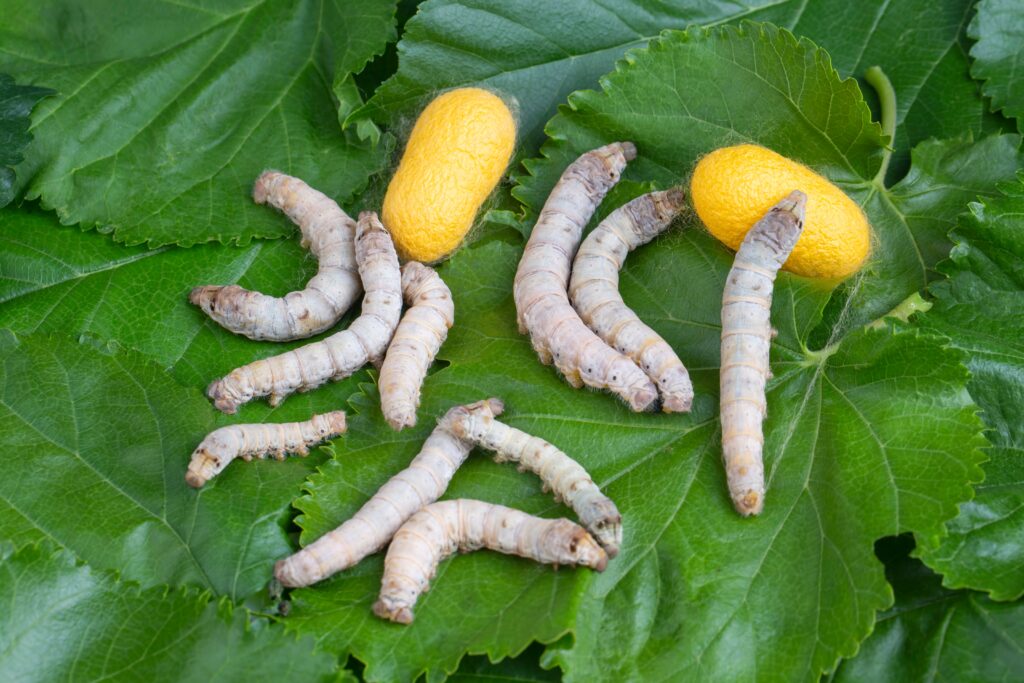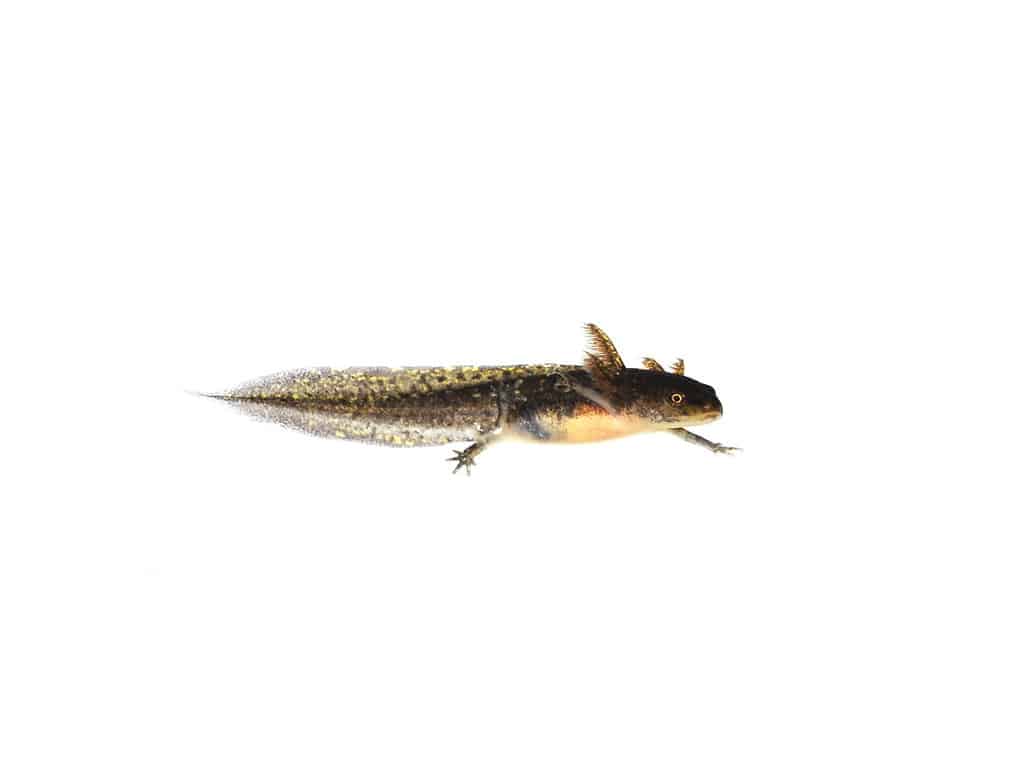The larva is a stage of growth that several types of animals have to go through before reaching their adult stage. These types of animals typically include insects, some amphibians, and cnidarians. The larva stage is often adapted to one environment type, while the later, adult stage, is adapted to another or both.
Larvae are in a worm-like stage of development, with no wings, and are in the first stage immediately following hatching from the egg. Larvae also progress through stages, before becoming an adult. The stages are often referred to as “molts.”
Insect Larva
Insect larvae types include Eruciform, Scarabaeiform, Campodeiform, Elateriform, and Vermiform. Roughly three-quarters of all insects go through a larval stage of development, rather than egg to nymph, to adult.

Roughly three-quarters of all insects go through a larval stage of development.
©Esin Deniz/Shutterstock.com
Eruciform
The eruciform larva stage of growth refers mostly to caterpillars before the metamorphosis into a butterfly takes place. Caterpillars are instantly recognizable worldwide. They’re usually cylindrical, have a head, and even have rudimentary antennae.
Scarabaeiform
A scarabaeiform is normally labeled a grub. Some of the larvae within this group somewhat resemble caterpillars. However, for the most part, they are much smaller than caterpillars, have a C-shape, and have a developed and recognizable head.
Campodeiform
This larva stage of growth highly resembles nymphs. They don’t look anything like what the casual observer would think of a larva. Like most insects, they have a distinguishable head, abdomen, legs, antennae, and a flat body.
Elateriform
Insects in the elaterifrom larva stage of growth resemble centipedes or millipedes, without the obvious legs. The body usually has a large number of segments, is longer than the average caterpillar, and has tiny body hairs or bristles. Elateriform insects have legs but they are often too tiny to see unless one is on its back.
Vermiform
These larva-stage insects resemble maggots. Maggots, the larva stage of flies, are vermiform larvae. They are tiny, usually an off-white or cream color, and lack any distinguishing features outside of their bodies.
Amphibian Larvae
Salamanders, frogs, and caecilians are the most common amphibians when referencing this stage of growth. But most amphibians do have to go through this stage, though the metamorphosis to adulthood is drastically different from that of insects.

During the larval stage, salamanders are carnivorous, feature a tail fin (rather than a tail), and have gills.
©HHelene/Shutterstock.com
Caecilians
These amphibians are one of the few that change very little from one stage to the next. They look very similar throughout their developmental stages. The biggest difference between a caecilian in the larval stage and one in the adult stage is the adult’s lack of gills or gill slits. Both are lost in the transition to the adult stage.
Salamander
Salamanders, like caecilians, lose their gills and gill slits when they transition into their adult form. During the larval stage, salamanders are carnivorous, feature a tail fin (rather than a tail), have gills, and are predators.
Anura
Anura is the order of frogs and frog larvae are tadpoles. Tadpoles go through a rapid and explosive transition from their larval stage into their adult stage. As tadpoles, they are essentially fish, with tail fins and gills. They also have teeth and are omnivorous, unlike their amphibious cousins, the carnivorous salamanders, and caecilians.
Cnidarians
Cnidarians are marine animals, such as sea anemones, corals, and jellyfish. Several cnidarians go through a larval stage.
Planula
There is not much to the planula body on surface observation. They have an oval shape and are incredibly tiny. Tiny cilia (hair or fiber-like protrusions) cover the entire body of the planula. These hairs help to propel the planula through the water.
Larva(e) Pronunciation
Larva/Larvae is pronounced: Lar-ve or Lar-vi.



